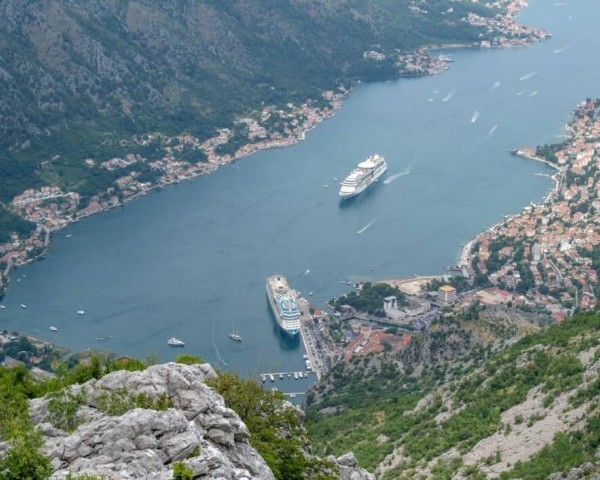Montenegro, often called the jewel of the Balkans, attracts more visitors yearly, drawn by its stunning national parks, mountains, bays, and beautiful beaches along the Adriatic coast. Despite its relatively small size, the country receives between 1.5 million and 2 million tourists annually, nearly three times its population. Mass tourism has become a serious problem.
Tourism contributes to 25% of Montenegro’s GDP and has become a key driver of the local economy. However, this tourism surge has started jeopardizing some of Montenegro’s iconic spots, particularly Kotor, a UNESCO World Heritage Site. The city is grappling with mounting pressure from the influx of visitors, especially the large cruise liners that navigate its bay daily, disgorging thousands of tourists into the streets of the old town. This situation demands urgent attention.
15,000 Tourists Disembark from the Cruise Lines Every Day
The emissions from a cruise ship are equivalent to those of 15,000 cars. With the frequent docking of five or six cruise ships, the air and water pollution in the area, particularly in the small town of Kotor, is alarming. This results in an overwhelming influx of around 15,000 visitors daily, a number that strains the small community. The typical tourist behavior of a brief stroll, a coffee, a souvenir, and departure make it increasingly challenging for genuine explorers to savor Kotor’s beauty.
An hour’s drive further south, the impact of tourism is even more apparent. Modern buildings rapidly multiply around the citadel in Budva, gradually taking over the surrounding hillsides. The Dean of the Faculty of Business and Tourism in Budva, Rade Ratkovic, highlights the issue: “In Budva, nearly 80% of accommodations are second homes, which undermines tourism and turns us into a real estate destination rather than a true tourist destination.”
Protecting from Mass Tourism
Experts believe that the country needs to develop a strategy to protect endangered travel destinations from the impacts of mass tourism, which are exacerbated by the increasing number of seasonal apartments. Montenegro’s most significant challenge in tourism is the lack of effective destination management. The government should address this issue in collaboration with the private sector.












